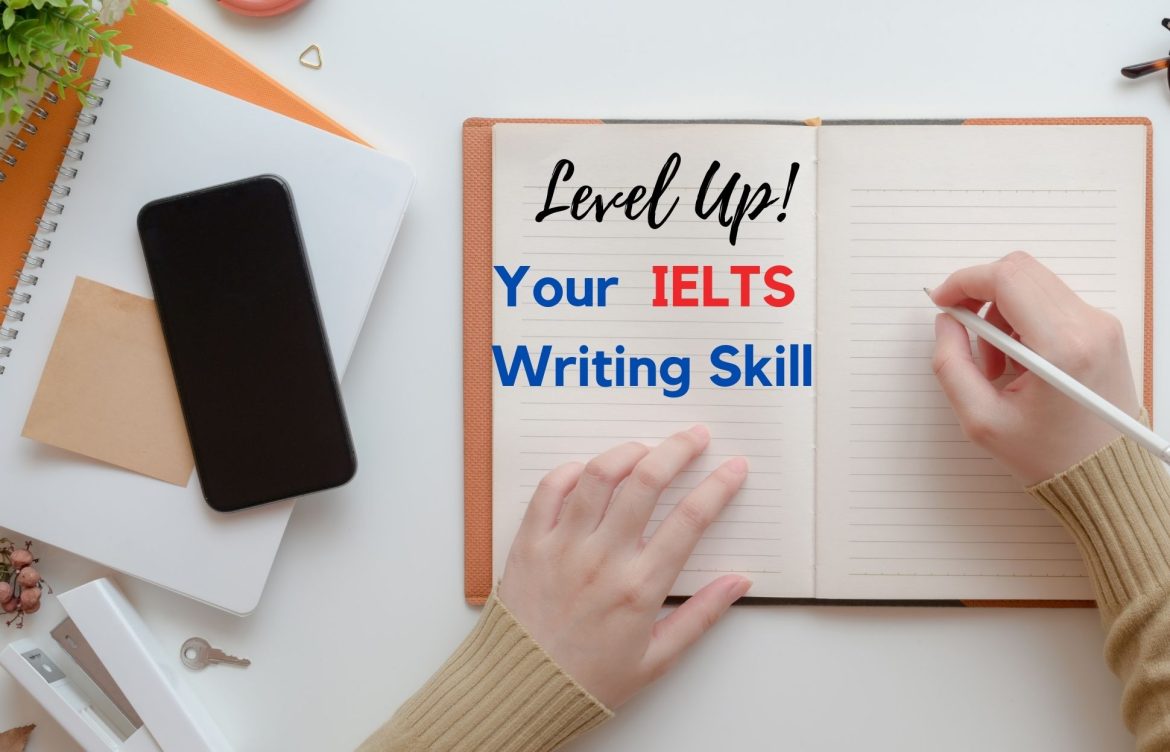In English grammar, a conjunction is a part of speech that connects words, phrases, or clauses within a sentence. Conjunctions are used to establish relationships between the connected elements, contributing to the overall coherence and flow of a piece of IELTS writing. There are three main types of conjunctions: coordinating conjunctions, subordinating conjunctions, and correlative conjunctions.
-
Coordinating Conjunctions:
These conjunctions connect elements of equal grammatical rank, such as two independent clauses or two words of the same type. The most common coordinating conjunctions are “and,” “but,” “or,” “nor,” “for,” “so,” and “yet.”
Example: “I wanted to go to the beach, but it was raining.”
-
Subordinating Conjunctions:
Subordinating conjunctions connect an independent clause with a dependent (subordinate) clause, indicating relationships such as time, cause and effect, condition, contrast, and more. Examples include “although,” “since,” “because,” “when,” “while,” “before,” “After,” “Unless,” “as,” and “if.”
Example: “Although it was raining, we decided to go for a walk.”
-
Correlative Conjunctions:
Correlative conjunctions come in pairs and connect similar elements within a sentence. Examples include “either…or,” “neither…nor,” “both…and,” “not only…but also,” and “whether…or.”
Example: “Both Sarah and John attended the meeting.”
Conjunctions play a crucial role in forming complex, compound, and compound-complex sentences.
-
Complex Sentences:
- A complex sentence consists of an independent clause and at least one dependent (subordinate) clause.
- The independent clause can stand alone as a complete sentence, while the dependent clause cannot.
Example: “Although it was raining, we decided to go for a walk.”
Independent clause: “We decided to go for a walk.”
Dependent clause: “Although it was raining.”
Subordinating Conjunctions:
Subordinating conjunctions introduce dependent (subordinate) clauses and connect them to independent clauses. They indicate relationships such as time, cause and effect, contrast, condition, etc.
Example of subordinating Conjunctions: “Although, since, because, when, while, before, after, if, Unless and as.”
Certainly! Let’s break down each sentence in detail:
- Although:
- Example: “Although the weather was bad, we decided to go for a picnic.”
- Description: “Although” is a subordinating conjunction introducing a contrast. The dependent clause is “Although the weather was bad,” and the independent clause is “we decided to go for a picnic.”
- Since:
- Example: “Since I started exercising, I feel more energetic.”
- Description: “Since” is a subordinating conjunction indicating a cause-and-effect relationship. The dependent clause is “Since I started exercising,” and the independent clause is “I feel more energetic.”
- Because:
- Example: “We stayed indoors because it was raining heavily.”
- Description: “Because” is a subordinating conjunction showing a cause-and-effect connection. The dependent clause is “Because it was raining heavily,” and the independent clause is “We stayed indoors.”
- When:
- Example: “I will call you when I reach the airport.”
- Description: “When” is a subordinating conjunction introducing a time-related condition. The dependent clause is “When I reach the airport,” and the independent clause is “I will call you.”
- While:
- Example: “She read a book while waiting for the train.”
- Description: “While” is a subordinating conjunction indicating simultaneous actions. The dependent clause is “While waiting for the train,” and the independent clause is “She read a book.”
- Before:
- Example: “Finish your homework before you go out to play.”
- Description: “Before” is a subordinating conjunction denoting a time-related condition. The dependent clause is “Before you go out to play,” and the independent clause is “Finish your homework.”
- After:
- Example: “After the storm passed, we went outside.”
- Description: “After” is a subordinating conjunction indicating a chronological sequence. The dependent clause is “After the storm passed,” and the independent clause is “We went outside.”
- If:
- Example: “I’ll be happy if you join us for dinner.”
- Description: “If” is a subordinating conjunction expressing a condition. The dependent clause is “If you join us for dinner,” and the independent clause is “I’ll be happy.”
- Unless:
- Example: “I won’t go unless you come with me.”
- Description: “Unless” is a subordinating conjunction indicating a condition that, if not met, results in a negative outcome. The dependent clause is “Unless you come with me,” and the independent clause is “I won’t go.”
- As:
- Example: “She sang loudly as she walked down the street.”
- Description: “As” is a subordinating conjunction indicating a simultaneous action. The dependent clause is “As she walked down the street,” and the independent clause is “She sang loudly.”
In each example, the subordinating conjunction introduces a dependent clause, which is combined with an independent clause to form a complete sentence. The conjunctions play a crucial role in expressing relationships between the ideas presented in the clauses.
-
Compound Sentences:
- A compound sentence comprises two or more independent clauses joined by coordinating conjunctions, punctuation (like a semicolon), or a conjunctive adverb.
Example: “I wanted to go to the party, but I had to finish my homework.”
Independent clause 1: “I wanted to go to the party.”
Independent clause 2: “I had to finish my homework.”
Coordinating Conjunctions:
Coordinating conjunctions connect two independent clauses of equal importance, creating a compound sentence.
Examples: “and, but, or, nor, for, so, yet.”
-
- And:
- Usage: Adds one thing to another, indicating a connection or continuation.
- Example: “I like tea and coffee.”
- Details: “And” is used to link similar or related ideas, items, or actions.
- But:
- Usage: Contrasts ideas or actions, showing a difference or contradiction.
- Example: “She wanted to go, but her friends were busy.”
- Details: “But” introduces a contrasting element to the previous statement.
- Or:
- Usage: Presents alternatives or options, indicating a choice.
- Example: “You can have cake or ice cream.”
- Details: “Or” is used when presenting mutually exclusive options.
- Nor:
- Usage: Connects two negative alternatives, emphasizing the negation.
- Example: “He neither confirmed nor denied the accusations.”
- Details: “Nor” is the negative counterpart of “or” and is used in negative constructions.
- For:
- Usage: Explains a reason or cause, providing additional information.
- Example: “She studied hard, for she wanted to excel in the exam.”
- Details: “For” is used to give a reason or explain a cause.
- So:
- Usage: Indicates a consequence or result, showing cause and effect.
- Example: “It started raining, so we decided to stay indoors.”
- Details: “So” establishes a cause-and-effect relationship between the clauses.
- Yet:
- Usage: Introduces a contrast or unexpected result, similar to “but.”
- Example: “It was late, yet they continued working on the project.”
- Details: “Yet” is used to introduce a surprising or contrasting element in the second part of the sentence.
- And:
Understanding the nuances of each coordinating conjunction helps writers express various relationships between ideas, create more complex sentence structures, and enhance the overall coherence of their writing.
-
Compound-Complex Sentences:
Compound-complex sentences have both independent and dependent clauses. They often involve a combination of coordinating and subordinating conjunctions.
- A compound-complex sentence combines elements of both compound and complex sentences.
- It includes at least two independent clauses and one or more dependent clauses.
Example: “Although it was raining, we decided to go for a walk, but we took umbrellas, and we had a great time.”
Independent clause 1: “We decided to go for a walk.”
Independent clause 2: “We had a great time.”
Dependent clause: “Although it was raining.”
Additional coordinating conjunctions: “but” and “and.”
Example: “Although it was raining, we decided to go for a walk, but we took umbrellas, and we had a great time.”
In this example, “although” is a subordinating conjunction, “but” is a coordinating conjunction, and “and” is also a coordinating conjunction. Together, they form a compound-complex sentence with multiple clauses and conjunctions.
Conjunctions are essential for constructing sentences with varying structures, allowing writers to express complex ideas, show relationships between different parts of a sentence, and create more sophisticated and varied writing styles.







